Inside The New York Botanical Garden
Posted in Around the Garden on March 30 2012, by Matt Newman
 What an offbeat week it’s been. Having caught word that we were making fun of it, the “long-gone” winter suddenly came knocking with frosty, clear afternoons and frigid nights; there was some worry in the northeast that confused plants with early flowers would take a hit. But spring isn’t bowing out. Stop by the NYBG and you’ll find yourself surrounded by thousands of airy plum and cherry blossoms flooding branches across the Garden. The apple blossoms, the last of the magnolias–all come together to create a pink and white snowfall of petals.
What an offbeat week it’s been. Having caught word that we were making fun of it, the “long-gone” winter suddenly came knocking with frosty, clear afternoons and frigid nights; there was some worry in the northeast that confused plants with early flowers would take a hit. But spring isn’t bowing out. Stop by the NYBG and you’ll find yourself surrounded by thousands of airy plum and cherry blossoms flooding branches across the Garden. The apple blossoms, the last of the magnolias–all come together to create a pink and white snowfall of petals.
Read More
Posted in Around the Garden, Photography on March 30 2012, by Matt Newman
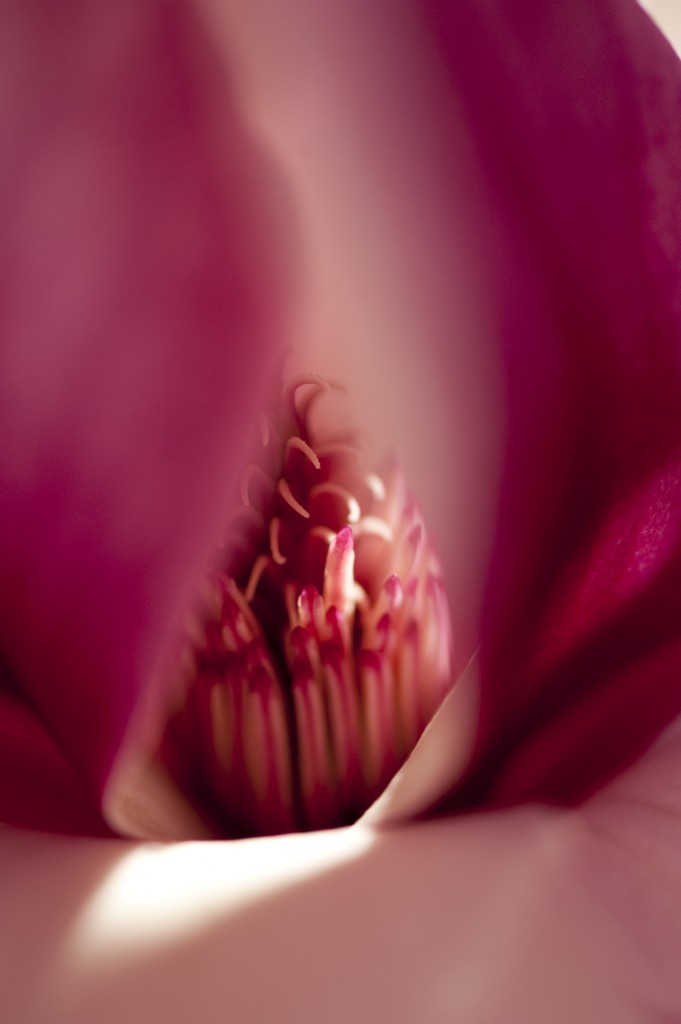
Magnolia x soulangeana — Photo by Ivo M. Vermeulen
Posted in Around the Garden, Darwin's Garden, Gardens and Collections, The Orchid Show on March 29 2012, by Joyce Newman
Joyce H. Newman is a Garden Tour Guide with The New York Botanical Garden.
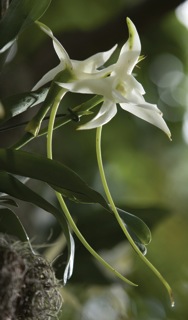 Of the many thousands of orchids on display during the Orchid Show, the two most requested flowers are the vanilla orchid and what is known as Darwin’s orchid.
Of the many thousands of orchids on display during the Orchid Show, the two most requested flowers are the vanilla orchid and what is known as Darwin’s orchid.
The exquisite ivory, star-shaped blossoms of Darwin’s star orchid (Angraecum sesquipedale) are famous for their association with Charles Darwin and his theory of evolution.
Read More
Posted in Around the Garden on March 29 2012, by Matt Newman
The cold snap of the past few days may be pitching everyone into sighs and confusion, but the Garden‘s caretakers aren’t wasting any time waiting for the summer sun to seize the reins. It takes an ambitious cherry picker and a steady-handed crew to give the Conservatory its yearly whitewashing.
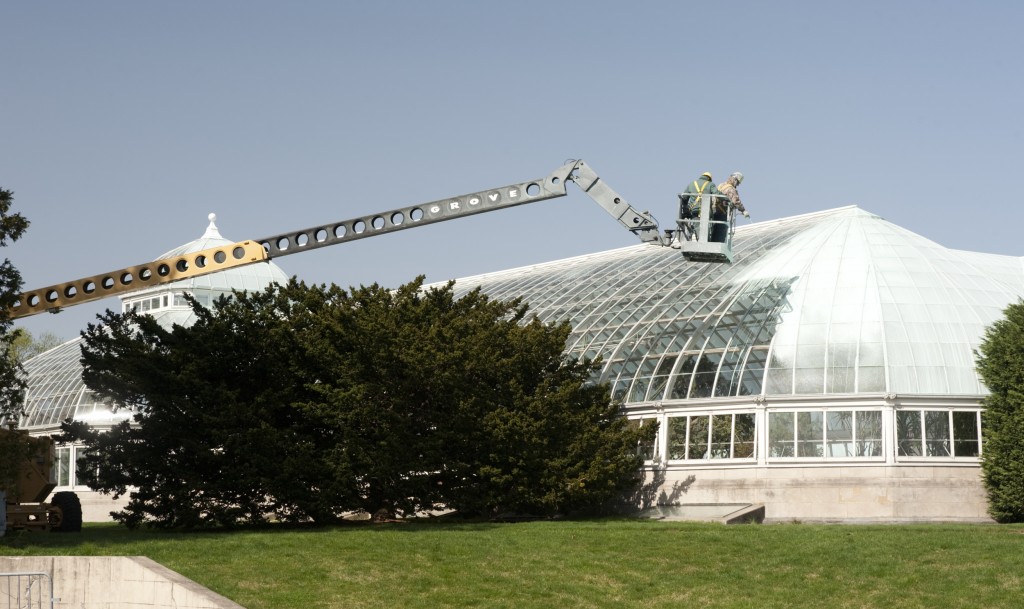
Photo by Ivo M. Vermeulen
Posted in The Orchid Show on March 28 2012, by Matt Newman
 Every now and again an event comes along during an exhibition like the Orchid Show that eclipses the beauty of the flowers themselves. It’s a statement you might find a bit on the mushy side, but I think you’ll agree that it’s apt. Because when Qu and Wahnzen stepped into the Conservatory a few weeks ago, one of the pair knew very little of the fairytale moment unfolding.
Every now and again an event comes along during an exhibition like the Orchid Show that eclipses the beauty of the flowers themselves. It’s a statement you might find a bit on the mushy side, but I think you’ll agree that it’s apt. Because when Qu and Wahnzen stepped into the Conservatory a few weeks ago, one of the pair knew very little of the fairytale moment unfolding.
Qu had spent months meticulously planning out his proposal, ever since he got word that his college sweetheart would be in New York for her birthday. “We met while studying at Oxford,” he says. One a philosophy major and the other a chemist in training, their divergent paths might well have left them strangers if not for a serendipitous thread of connection: “We were both members of the Varsity Ballroom Dance team.”
Read More
Posted in Around the Garden, Photography on March 28 2012, by Matt Newman
I was walking into work on Monday morning when I caught sight of the small green clouds perking up Tulip Tree Allée. There was a moment of cognitive dissonance–I was sure the branches had been barren when I left on Friday night.
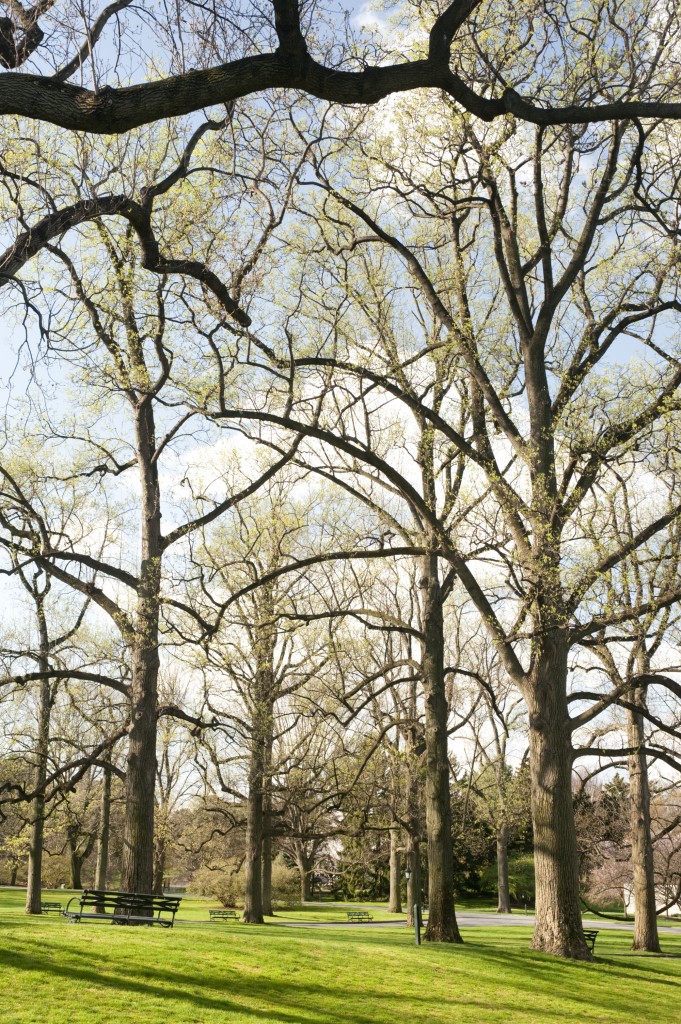
Photo by Ivo M. Vermeulen
Posted in Gardening Tips, The Orchid Show on March 27 2012, by Sonia Uyterhoeven
Sonia Uyterhoeven is the NYBG‘s Gardener for Public Education.
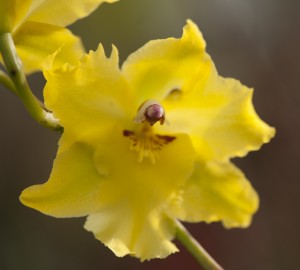 For all of those orchid neophytes or orchid wannabes, this article is about giving you some courage. Not enough bravado to go out and buy a vanda or a masdevallia–that would be foolish to start–but hopefully the resolution to take a stab at a moth orchid, a slipper orchid, or dancing ladies.
For all of those orchid neophytes or orchid wannabes, this article is about giving you some courage. Not enough bravado to go out and buy a vanda or a masdevallia–that would be foolish to start–but hopefully the resolution to take a stab at a moth orchid, a slipper orchid, or dancing ladies.
Let’s start from the beginning, because wise purchases come from planning. Walk around your home and look for the empty spaces that you would like to fill with orchids. What does the light in this area look like? If you are not sure, place your hand 12 inches above the spot and see what kind of shadow is cast on the area. If it is a well-defined shadow, you have bright light; if fuzzy, you have medium light; and a faint shadow signifies low light. If there is no discernible shadow, then it is not the right place to try and grow a plant.
Read More
Posted in Around the Garden, Behind the Scenes, Learning Experiences on March 27 2012, by Amy Weiss
Amy Weiss works in The New York Botanical Garden’s Herbarium, cataloging and preserving plant specimens from around the world.
 Part of my job in the Herbarium of the NYBG is processing plant collections researchers have stored over the years. In general, we only mount plants that have been identified to species. That process can be quick if there is currently a specialist–we send the person a duplicate of a plant collection, and they send us the plant’s name once it has been identified. However, identifying plants to specific species can take much longer if there is no one currently specializing in a certain family or genus.
Part of my job in the Herbarium of the NYBG is processing plant collections researchers have stored over the years. In general, we only mount plants that have been identified to species. That process can be quick if there is currently a specialist–we send the person a duplicate of a plant collection, and they send us the plant’s name once it has been identified. However, identifying plants to specific species can take much longer if there is no one currently specializing in a certain family or genus.
Herbaria are important because they are the depositories of such historical collections, and with our care they will still be around when a specialist is available. Once identified, we mount the plant specimen for New York, and distribute any duplicates to other herbaria around the world. The collections gathered by NYBG scientists that are still waiting for identification reside in our cold room in the meantime, where they will occasionally remain for decades before the right specialist becomes available.
Read More
Posted in Around the Garden, Photography on March 27 2012, by Matt Newman
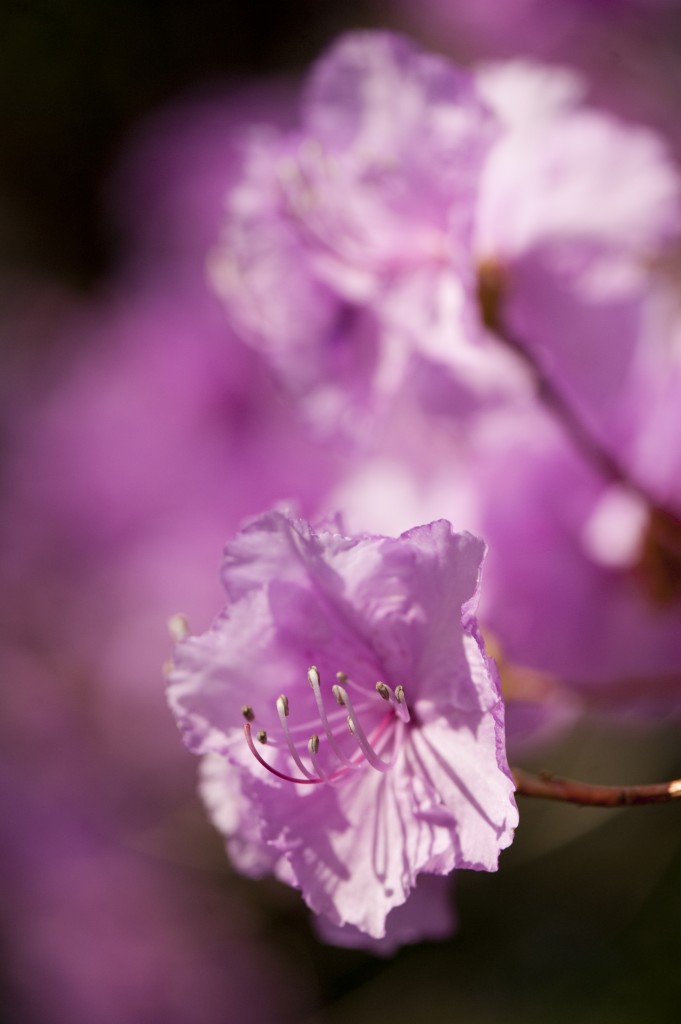
Korean rhododendron (Rhododendron mucronulatum) — Photo by Ivo M. Vermeulen
Posted in Around the Garden, Gardening Tips on March 26 2012, by Matt Newman
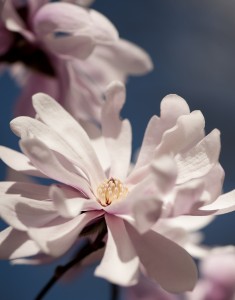 Meteorology is something of an inexact science. Some days, forecasting the weather seems a little closer in discipline to fortune telling. And after all of the comforting reassurance (we were so set on it!) that the cold was behind us and nothing but picturesque spring days lay ahead, the hard freeze set to plow through New York tonight has shoulders slumping in gardens across the region. But, while it’s tempting, skip leading a pitchfork mob to your weatherman’s house. Shooting the messenger never solved any problems, especially when nature is such a fickle character.
Meteorology is something of an inexact science. Some days, forecasting the weather seems a little closer in discipline to fortune telling. And after all of the comforting reassurance (we were so set on it!) that the cold was behind us and nothing but picturesque spring days lay ahead, the hard freeze set to plow through New York tonight has shoulders slumping in gardens across the region. But, while it’s tempting, skip leading a pitchfork mob to your weatherman’s house. Shooting the messenger never solved any problems, especially when nature is such a fickle character.
The inbound chill may be grim news for many of the early blooms that sprung out of dormancy at the first sign of warm weather. But which petals will pull through, and which are facing the axe? We asked Kristin Schleiter, our acting Director of Outdoor Gardens, to chime in with her take on the situation. Depending on what you’re keeping in your home garden, you may be in the clear.
Read More
 What an offbeat week it’s been. Having caught word that we were making fun of it, the “long-gone” winter suddenly came knocking with frosty, clear afternoons and frigid nights; there was some worry in the northeast that confused plants with early flowers would take a hit. But spring isn’t bowing out. Stop by the NYBG and you’ll find yourself surrounded by thousands of airy plum and cherry blossoms flooding branches across the Garden. The apple blossoms, the last of the magnolias–all come together to create a pink and white snowfall of petals.
What an offbeat week it’s been. Having caught word that we were making fun of it, the “long-gone” winter suddenly came knocking with frosty, clear afternoons and frigid nights; there was some worry in the northeast that confused plants with early flowers would take a hit. But spring isn’t bowing out. Stop by the NYBG and you’ll find yourself surrounded by thousands of airy plum and cherry blossoms flooding branches across the Garden. The apple blossoms, the last of the magnolias–all come together to create a pink and white snowfall of petals.








